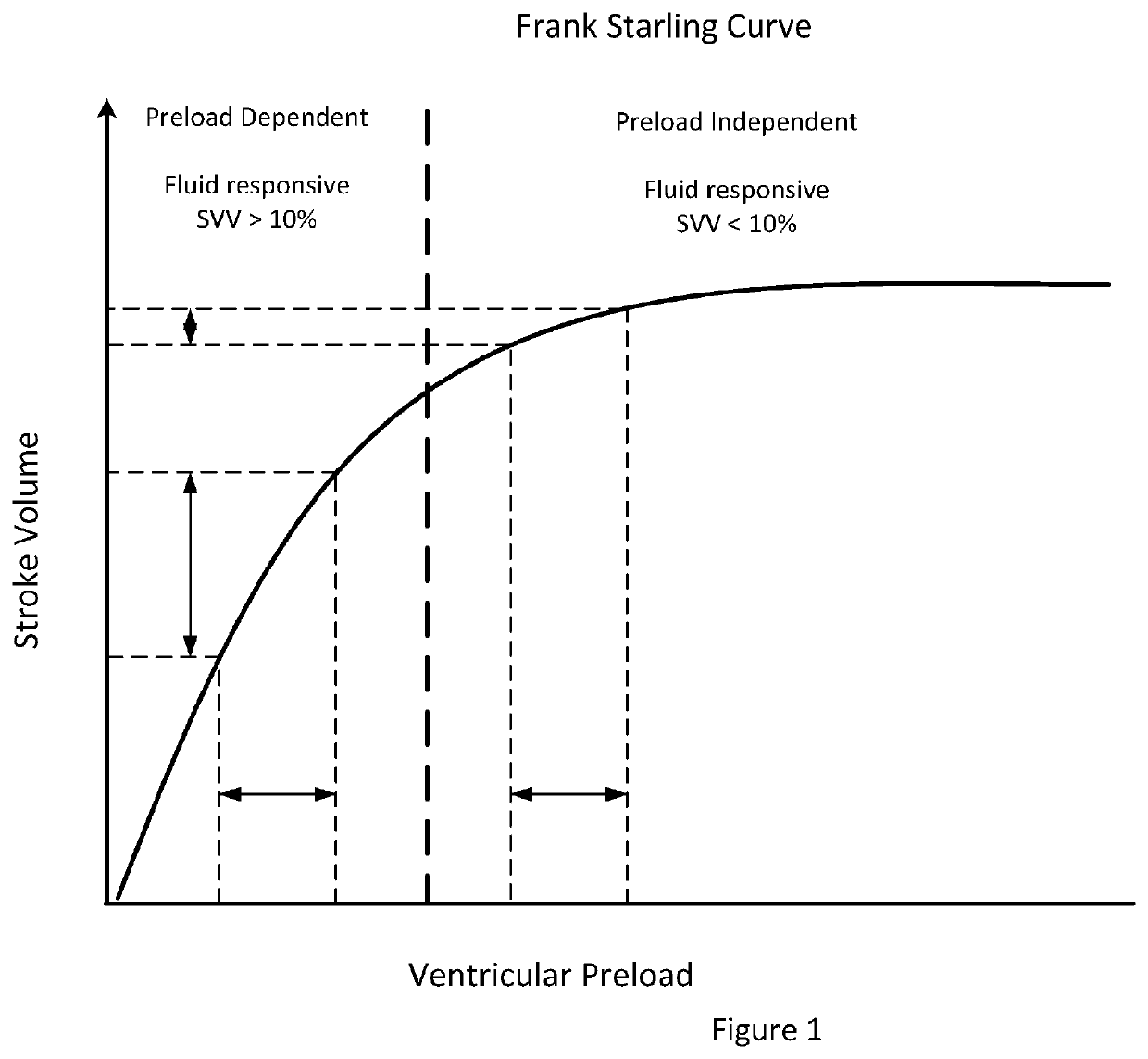Although there are a few publications showing positive results the overwhelming consensus is that spontaneous breathing does not work with current processing methods.
No existing system can be used on non-ventilated patients.
Pinsky explains the problems well by stating that historical efforts have failed in non-ventilated patients due to a variety of factors that explain the lack of performance.
Spontaneous inspiratory efforts can increase intra-abdominal pressure because of active compression of abdominal muscles, exaggerating the preload response.
Pinsky also discussed limitation of the standard Valsalva maneuver because the Valsalva maneuver can also affect right and left ventricular afterload, which can contribute to respiratory variations in stroke volume.
Pinsky concludes his review of issues by stating “regrettably, ΔPP and other derived indices cannot be used in spontaneously breathing patients, as slight and sometimes undetected changes in breathing pattern may affect these variables”.
Muller at al. states that dynamic indices such as arterial pulse pressure or aortic velocities recorded by esophageal Doppler or echocardiography are not valid in spontaneously breathing patients.
However, the authors recommend caution as low variations (<40%) of IVC diameter cannot rule out a need for fluid therapy in spontaneously breathing patients with acute circulatory failure.
However, the performance during this maneuver was significantly lower than during quiet respiration.
The publication concludes that their findings confirm the poor value of clinical signs and / or standard hemodynamic parameters to predict the effects of fluid expansion in spontaneous breathing patients.
The results suggest that pulse pressure variation and systolic pressure variation are less effective in predicting fluid responsiveness during spontaneous breathing than in mechanical ventilation.
Although Soubrier at al. demonstrated decreased performance with forced exhale, other authors have shown improved results in limited testing.
The publication has similar limitations to Bronzwaer but the influence of anesthesia and the use of pigs makes the study hard to translate to ambulatory, awake humans.
The protocol and system used do not address the issues defined by Pinsky in terms of a creating a repeatable test as the degree of inspiration is not controlled.
Additionally, the length of the Valsalva at 10 second will be difficult for many patients to perform.
In these cases, static markers of cardiac preload are generally in the normal range and are rarely helpful for determination of volume responsiveness.
Because of the presence of spontaneous breathing, the indices of volume responsiveness that use heart-lung interactions, such as respiratory variation in arterial pressure and in stroke volume are no longer reliable.”
In the discussion, the authors site possible issues with normalization of heart rate, possible problems with the breathing protocol, and the degree of change in the Frank-starling curve.
Specifically, the authors state that “a main limitation of using LVETp and PTT as indicators of blood loss is their relatively large inter-subject variations in comparison with the changes induced by blood donation, which means that it is their intra-subject changes rather than their absolute values that are clinically useful, as with most other hemodynamic measurements.
In addition, significant increases in AMBR were found due to blood loss in ear and finger PPG signals.
Testing was limited to healthy individuals with a narrow age distribution.
A limitation of prior work has been the inability to determine the position of the finger- or head-based PPG sensors, specifically the sensor's vertical position relative to the heart.
Historically, the processes used electrodes placed on the skin, but newer devices no longer use electrodes.
The resulting cardiac operating points cause in a large change in the cardiac output or stroke volume.
The ability to simulate this define movement without a mechanical bed is almost impossible.
Examination of FIG. 9 illustrates, that inspiration due to decreased lower intrathoracic pressure can result in venous collapse especially under hypovolemic conditions.
The result is a damped response to right heart changes.
These changes will have a longer time constant and this difference in timing can be significant when processing the measured signals.
A single Valsalva maneuver is a single measurement and is difficult for the subject to complete due to the duration of the maneuver and the moderately high intrathoracic pressures.
This phenomenon becomes the predominant component of stroke volume fluctuations during hypervolemia and / or congestive heart failure and is not predictive of fluid responsiveness.
The fact that conventional metrics of systolic pressure variance and stroke volume variance are based on the difference between the maximal and minimal values of systolic arterial pressure during the mechanical breath might reduce their accuracy in the prediction of volume responsiveness, especially in the presence of impaired left ventricular function.
In stark contrast, decreased intrathoracic pressure can result in venous collapse and a plateau in terms of maximal venous return.
First, as noted above, the response time associated with ventricular interdependence effects is rapid due to the lack of any air damping.
However, a sizable change in the volume of the right ventricle leads to a decrease in the volume of the left ventricle because of a leftward shift of the interventricular septum.
In fact, systolic overload of the right ventricle results in the most severe geometric configurational changes of the left ventricle.
 Login to View More
Login to View More  Login to View More
Login to View More 


